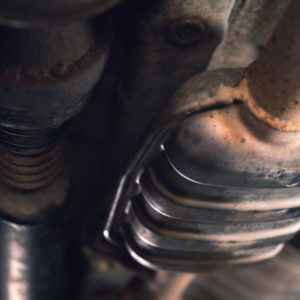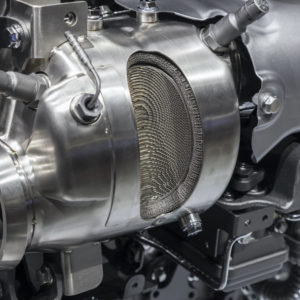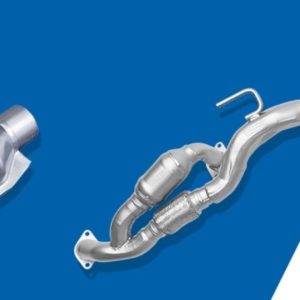Most cars only have one catalytic converter. But if a car has been modified to have a dual exhaust, it could have two catalytic converters. This setup is pretty common in V-type engines, but it’s also possible to route the exhaust using one Y-shaped exhaust pipe.
Vehicles that need to convert the exhaust several times to meet emissions regulations often have multiple catalytic converters.
How Does a Catalytic Converter Work?
A catalytic converter uses catalysts (rhodium, palladium, and platinum) to kickstart a chemical reaction and make exhaust emissions less harmful.
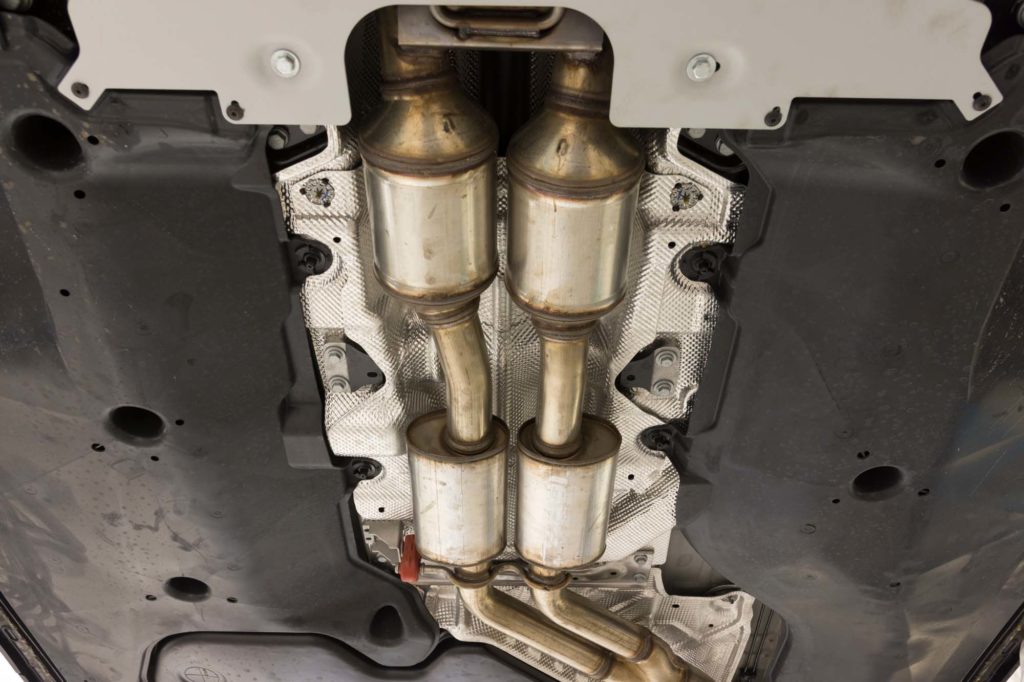
In a three-way catalytic converter, nitrogen oxide (NOx), carbon monoxide (CO), and hydrocarbons (HC) pass through the catalyst in the first section of the converter. During this phase, NOx emissions are reduced and separated into nitrogen and oxygen. In the second section of the catalytic converter, the hydrocarbons and carbon monoxide are oxidized, forming carbon dioxide (CO2) and water vapor (H2O).
Vehicles equipped with an OBD-II system have a heated oxygen (O2) sensor that monitors the catalytic converter’s performance. The catalytic converters in modern vehicles have oxygen storage capacity because the catalyst is coated in cerium instead of precious metals.
Watch this video to understand how catalytic converters work:
You can also check out these videos for tips on how to replace your catalytic converter:
Where Is the Catalytic Converter Located?
The catalytic converter is ideally near the exhaust manifold. The farther it is from the exhaust system, the greater the amount of exhaust gases that need to cool before they reach the converter.
The catalytic converter looks like a ceramic honeycomb with about 400 openings per square inch. The converter is layered with a washcoat, which is a porous aluminum material that makes the surface rough. The catalytic converter connects to the exhaust manifold using an exhaust pipe.
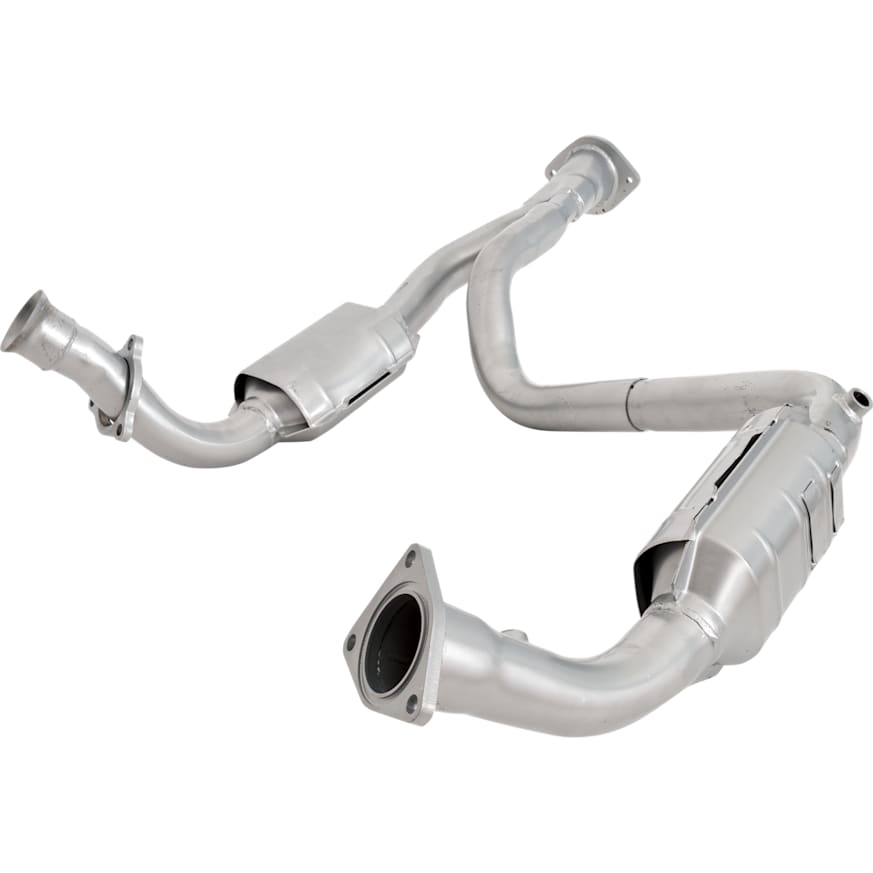
How Does a Catalytic Converter Fail?
A catalytic converter can last up to 10 years or more. However, various issues can cause it to fail ahead of its time. Here are some of them.
Contamination
The exhaust has a lot of excess engine oil, antifreeze, sulfur, and other chemicals, which increases the risk of damaging the catalytic converter.
Wear and Tear

The catalytic converter can withstand excessive temperatures, but wear and tear can still take a toll on it over time. Unburned fuel or excessively lean mixtures and long idling periods can cause the converter’s internal parts to break.
Improper Air/Fuel Mixtures
Excessively lean or rich fuel mixtures can affect the catalytic converter’s operation. A misfiring engine or a defective coolant temperature sensor is usually the culprit behind this issue.
Are All Catalytic Converters the Same?
No. Many vehicles have direct-fit catalytic converters, which are made for a specific make and model. Their location can vary, as some are mounted closer to the exhaust manifold.
Direct-fit catalytic converters typically have special fittings on each end of the device. These allow them to bolt directly into the exhaust of the vehicle they’re designed for.
In contrast, universal catalytic converters fit in a wide range of vehicles. While they’re cheaper than direct-fit ones, they are often more complicated to install. They can only work when the catalytic converter’s inlet and outlet tubes match the exhaust system.
How Much Is a Catalytic Converter?
A catalytic converter can cost anywhere between $100 to over $1000, depending on several factors. The brand, tube material, and state regulations (40 or 50-state legal) can affect the price for the part alone. As for labor costs, expect to pay around $70 to $130 an hour.
Where to Get a New Catalytic Converter
If your catalytic converter shows any of the signs of failure above, it might be time to replace it. A bad catalytic converter can cause various issues like increased emissions. On the bright side, finding a replacement is a breeze when you shop at CarParts.com.
Our catalytic converters are carefully selected by industry professionals to ensure they’re built to last. They come with a low-price guarantee, so you don’t have to go over budget for your repairs. On top of that, our warehouses are strategically located all over the US, so you can expect your order on your doorstep in a few days.
You don’t have to get out of your house to get your hands on a new catalytic converter. Use your mobile device or computer to visit our website and shop for what you need. If you have any questions, contact our customer service team anytime via our toll-free hotline.
Why deal with the hassles that come with driving with a bad catalytic converter? Get yourself a replacement at CarParts.com.
Any information provided on this Website is for informational purposes only and is not intended to replace consultation with a professional mechanic. The accuracy and timeliness of the information may change from the time of publication.




